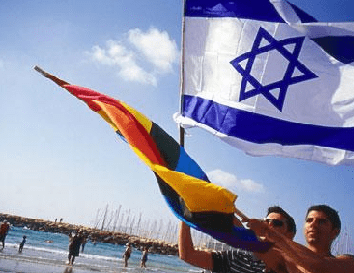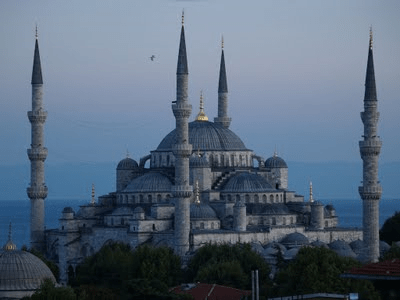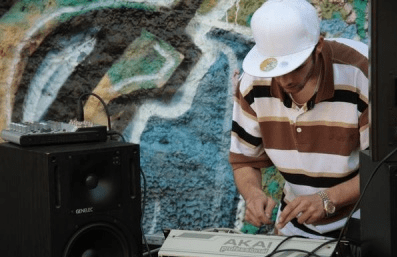
TEL AVIV
Tel Aviv is called the Bubble by the Israelis,” explains director Eytan Fox. It is their Sodom and Gomorrah. The city of pleasure, of sin, of freedom of morals, of lightness, as opposed to Jerusalem, which is more religious, moral and intellectual.
Despite the war, terrorism, the three-year military service, the death of young people, the city remains a world apart. Is modern, decadent Tel Aviv the new cultural hub of the Middle East? The film industry is dynamic, no less than 3 films in which Tel Aviv is the muse, have already been released in France this year (“The Bubble” by Eytan Fox, “Emile’s Girlfriend” by Nadav Lapid, “The Jellyfish” by Ethan Kenet and Shira Greffen)
ISTANBUL CITY
Istanbul, the ancient capital of Turkey (which was Constantinople, which was Byzantium) cannot be revealed in a few days. Even if it disappointed you at first sight, it will leave you later with a regret, a nostalgia and you will return. “A distant princess born of the East and the West”.
We now dream of discovering Istanbul, the old Ottoman capital, which turns out to be multiple, abundant, decadent, bewitching.
Here, the genius of the place excites the traveler and catches him through its labyrinth of the Grand Bazaar. One strolls among this human anthill, in a maze of alleys loaded with history where one can always enjoy a Turkish coffee while smoking narghile in Pierre Loti’s café. (View on a crowd of people with cafes at the corner of streets)


The sentence that seemed to me the most descriptive of the nocturnal magic of this magnificent city comes from Alexandre Dumas: “Imagine a pearl-gray atmosphere, iridescent with opal, which is neither that of dawn nor that of dusk […] transparent darkness that is not night but only an absence of day […] a calm that refreshes your soul, a quietude that dilates your heart […]”.
It is nicely said but the reality is even more beautiful and we now dream of discovering St Petersburg in winter, without sleepless nights, but under the charm of the snow and with the possibility of ice skating on the Neva. This is not without a few hip hop dancers who rap on the ice. It has a certain charm.
PARIS RIO
It is through the samba that we explore the city of Rio which gives itself over to the revelry of Carnival. This year, the school of samba Grande Rio parades in the colors of France with as major guests the Moulin Rouge and the Carnival of Nice.
Through French musicians settled in Rio, we discover the different types of samba : the street samba, the carnival samba, the concert samba, etc.
A week goes by at a dizzying pace and there are so many wonders and secrets to discover. City officials expect more than 700,000 tourists to visit Rio during the five-day carnival. For the last Carnival, police officers were out in force in the city center, while the threat of a police strike loomed. Senior police officers threatened to resign or were dismissed because they demanded higher salaries and better working conditions.
Rio is one of the most violent cities in Latin America, but Carnival, an important source of foreign exchange, is usually closely watched. We come out of this Carnival, exhausted, emptied but happy and we took some breaths of happiness.
URBAN MOSCOU OR MOSCOU UNDERGROUND
Moscow is the capital of immigrants, the homeland of wanderers and vagabonds. It can be loved without requiring genealogy or recommendation, always loving, ready to be feted by anyone who has the temperament and the carefree spirit. Moscow belonged to the first person who came here when it was the center of gravity of a gigantic empire, the last on earth. It is still the center of gravity today, even though the country has been turned upside down. It remains the main refuge for all the underprivileged in a territory that stretches from Poland to the Pacific Ocean and from the White Sea to Iraq.
Moscow is becoming more Europeanized and Americanized. One has the feeling that this city has two lives. One is obvious and noisy. The other is secret, invisible to the foreign and inexperienced eye. For many, Moscow is much more than a city, it is a part of contemporary history.
But the Moscow night is wild. Bars, jazz clubs, concert halls and nightclubs make the city vibrate from dusk to dawn. There is probably no other area of city life that has changed so radically in the last 15 years. Muscovites have learned quickly and very well. Moscow hesitates between Las Vegas and New York, between the glitz of huge and noisy casinos and the privacy of innovative music scenes.
There is not a night of the week when a concert or a DJ is not worth a night out. The atmospheres are neat, the musical atmosphere often impeccable and Muscovites are either wild or elegantly attentive to artistic creation, show-offs or simply gathered with friends for a drink. Its architecture is a meeting of East and West, tradition and modernity.
HABANA TROPICAL
The music and dances known as “Latin” were born from the constant crossing of African, American and European cultures. For the dance, the samba is Brazilian but still believes in its African ancestors. Tango from the Rio de la Plata has long been in love with Europe. Salsa, originally from the Caribbean, was forged in the Latino suburbs of New York. Without forgetting the rumba, the mambo, the cha-cha-cha, the forro, the capoeira.
From Salvador de Bahia to New York via Buenos Aires, Havana and Paris, the popularity of these dances testifies to the extraordinary vitality of their rhythms, their music and their identities. Often misunderstood or lumped together with the most popular of them – namely salsa and others – these dances deserve to be rediscovered through our travels in Havana, their stories, their beliefs, their energies and their desires. To better understand them, body and soul.
DANSE AVEC MOI
In Havana, the richness, the profusion of the different types of dances is incredible. The so-called “Latin” dances were born from the incessant crossing of African, American and European cultures. People come from all over the world to take salsa classes and the Cuban National Opera is one of the most popular in the world.
Havana is a living laboratory for all the dance styles that abound, and at the same time Havana is sailing today with all the problems that are installed. No horizon for the youth, is it really a communism? The difficulties of everyday life, such as the lack of water, food, the various forms of poverty, etc., complicate artistic creation, and in particular dance.
These classical and modern Cuban dances, Latin, festive, try to get out of this daily life. It is through the crossed portraits of 9 dancers or choreographers that we will visit the Cuban dances, in Havana. And in certain types of sophisticated dance like ballet or contemporary dance, we also enter quite deeply into the technique.